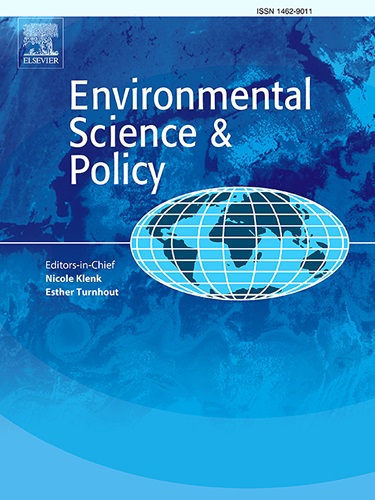“你准备好了吗?”:利用Tsáá?对社区参与的气候变化脆弱性评估和适应规划过程进行交叉分析?chchel nedane
IF 4.9
2区 环境科学与生态学
Q1 ENVIRONMENTAL SCIENCES
引用次数: 0
摘要
气候灾害的交叉分析表明,社会因素在人们如何经历和应对气候变化和极端天气事件方面发挥着重要作用。尽管有这些见解,但交叉学科的学术在其理论取向和在进行应用交叉研究以理解气候变化的社会层面时所面临的挑战方面面临着批评。这篇文章展示了交叉女权主义视角对社区层面气候变化规划的价值。该研究与加拿大不列颠哥伦比亚省北部的一个土著社区合作,揭示了包括文化、年龄、性别和灵性在内的社会维度以不同和不同的方式结合在一起,影响社区如何界定气候变化问题、表达能动性、理解影响和脆弱性以及提出应对措施。在社区参与的气候变化脆弱性评估和适应规划过程中,关注这些维度揭示了群体之间的差异,同时也揭示了不同观点和世界观之间的共同目标和重叠领域。除了揭示共性之外,对社会维度的持续考虑也增强了当地的适应能力,并通过为项目框架和设计、方法选择和参与者招募以及发展有意义的产出提供信息,塑造了规划和决策过程。我们利用这一证据来展示交叉视角的实际应用,并解释在气候变化脆弱性评估和适应规划过程中嵌入社会维度的考虑如何为加拿大及其他地区的社区带来更好的情境化、更大的支持和更有意义的结果。本文章由计算机程序翻译,如有差异,请以英文原文为准。
“Are you prepared or not?”: An intersectional analysis of a community-engaged climate change vulnerability assessment and adaptation planning process with Tsáá? Ché Ne Dane
Intersectional analyses of climate hazards have demonstrated that social dimensions play important roles in how people experience and respond to climate change and extreme weather events. Despite these insights, intersectional scholarship has faced criticism around its theoretical orientation and the resulting challenges of doing applied intersectional research to understand social dimensions of climate change. This article demonstrates the value of an intersectional feminist lens to community-level planning for climate change. Working with an Indigenous community in northern British Columbia, Canada, the research revealed that social dimensions including culture, age, gender, and spirituality combined in distinct and various ways to influence how the community framed the problem of climate change, expressed agency, understood impacts and vulnerability, and proposed responses. Attending to these dimensions throughout a community-engaged climate change vulnerability assessment and adaptation planning process illuminated differences among groups, while also exposing shared goals and areas of overlap among diverse perspectives and worldviews. Beyond exposing commonalities, consistent consideration of social dimensions also enhanced local adaptive capacity and shaped the planning and decision-making process by informing project framing and design, methods selection and participant recruitment, and developing meaningful outputs. We use this evidence to demonstrate the practical application of an intersectional lens and to explain how embedding consideration of social dimensions within climate change vulnerability assessment and adaptation planning processes can produce better contextualization, greater buy-in, and more meaningful outcomes for communities across Canada and beyond.
求助全文
通过发布文献求助,成功后即可免费获取论文全文。
去求助
来源期刊

Environmental Science & Policy
环境科学-环境科学
CiteScore
10.90
自引率
8.30%
发文量
332
审稿时长
68 days
期刊介绍:
Environmental Science & Policy promotes communication among government, business and industry, academia, and non-governmental organisations who are instrumental in the solution of environmental problems. It also seeks to advance interdisciplinary research of policy relevance on environmental issues such as climate change, biodiversity, environmental pollution and wastes, renewable and non-renewable natural resources, sustainability, and the interactions among these issues. The journal emphasises the linkages between these environmental issues and social and economic issues such as production, transport, consumption, growth, demographic changes, well-being, and health. However, the subject coverage will not be restricted to these issues and the introduction of new dimensions will be encouraged.
 求助内容:
求助内容: 应助结果提醒方式:
应助结果提醒方式:


